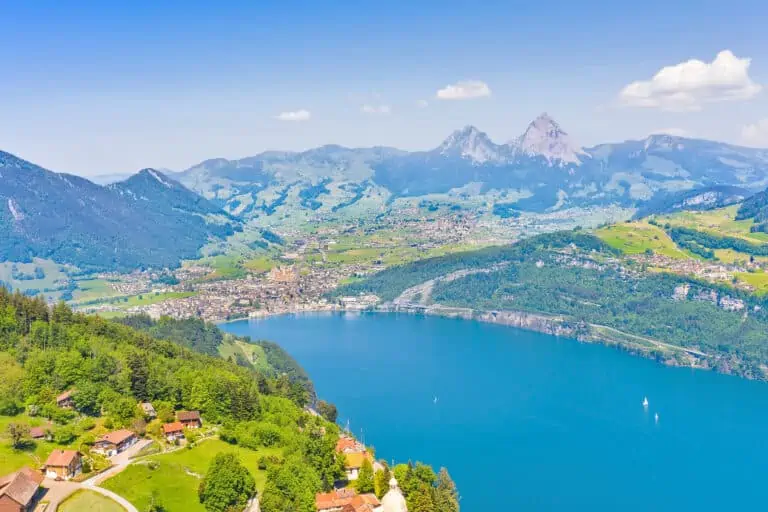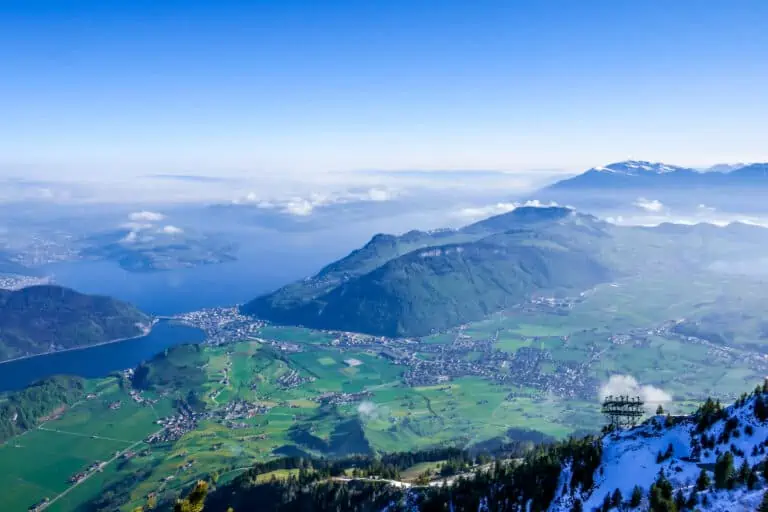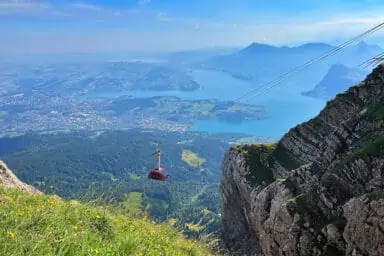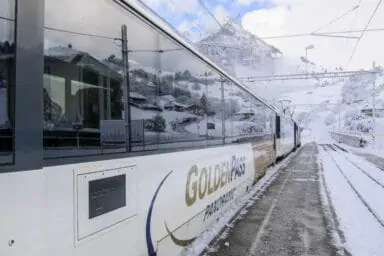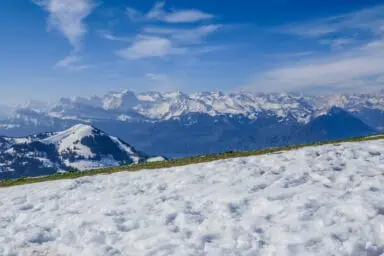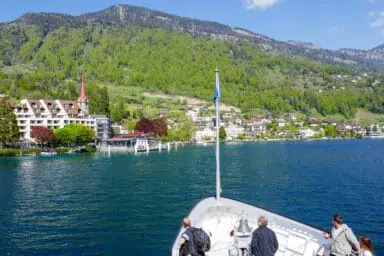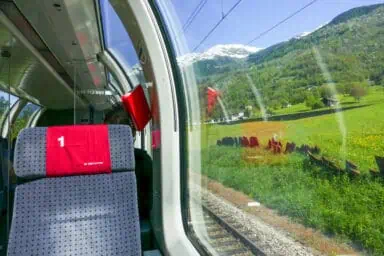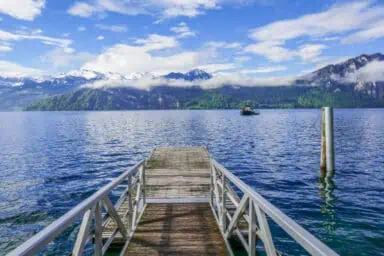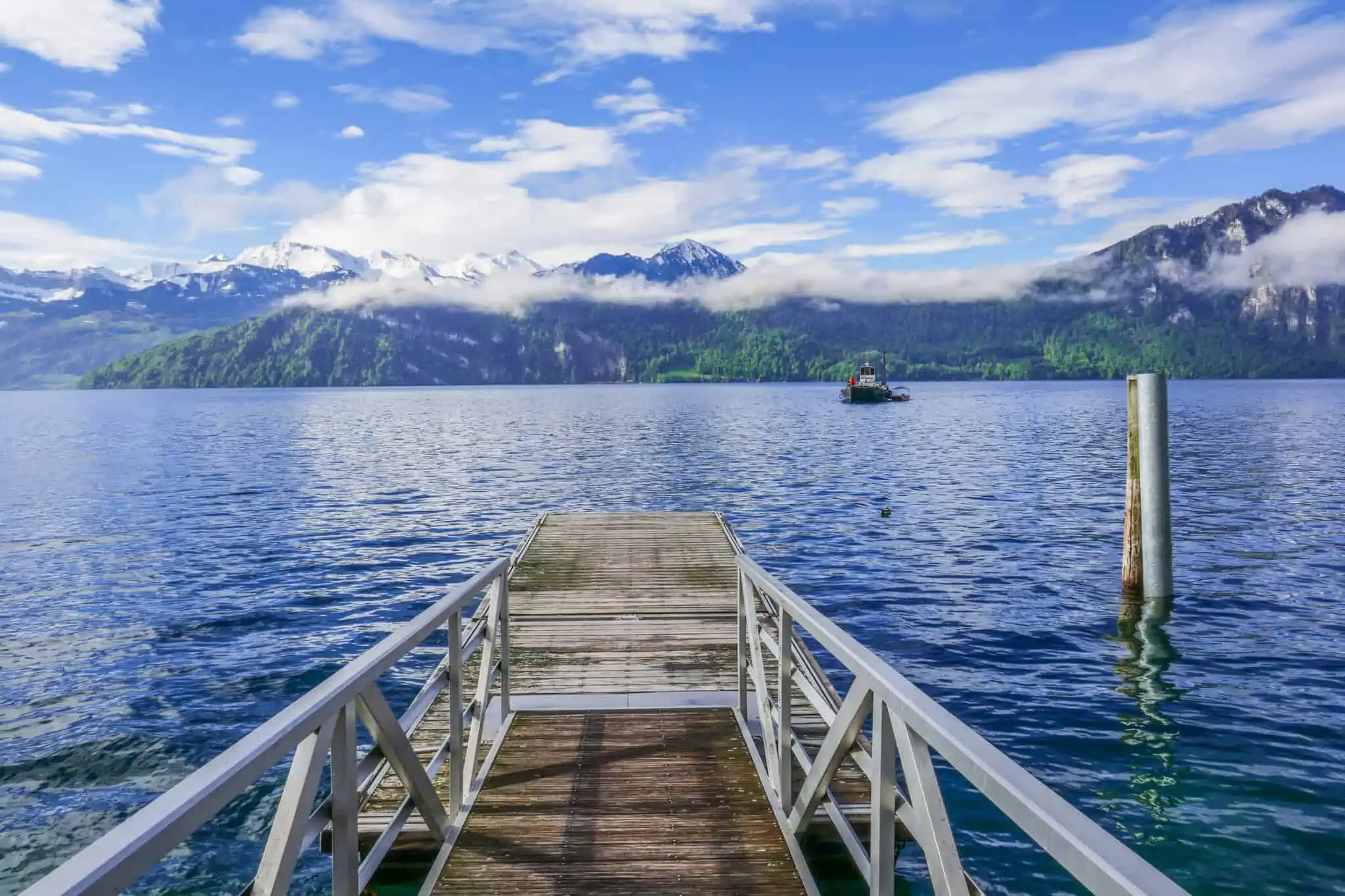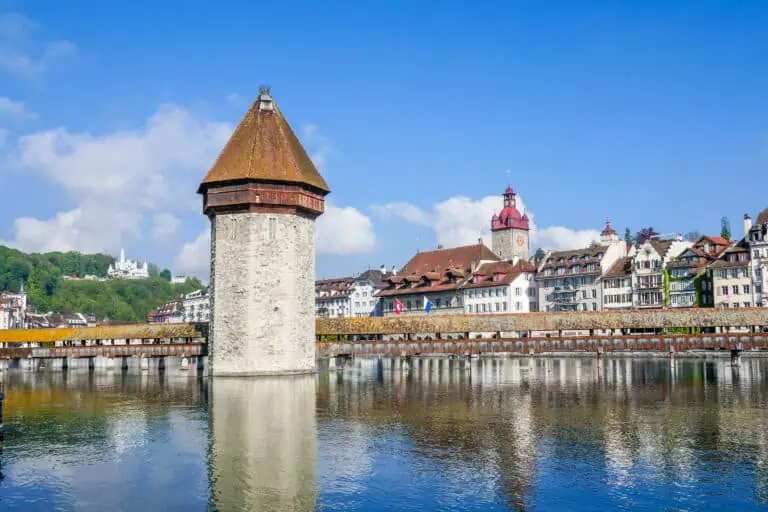Things to do in the Lake Lucerne area 
Must-do's around Lake Lucerne
If you can't spend a lot of time near Lake Lucerne, try to fit in these 3 activities for a varied experience:
- The town center of Lucerne is worth a visit, even if you have just a few hours. The old town center can be visited on foot from the rail station, for example with our town walk.
- Make a boat trip on the lake.
- Visit one mountain: Rigi, Pilatus or Stanserhorn. Pilatus is closest to Lucerne. In many cases, you can combine a mountain visit with a boat ride.
Scenic trains in the Lake Lucerne region
If you like scenic train rides, look into these routes:
- The ride to Bern through the lovely Emmental ("Emmen Valley"). Enter "Entlebuch" as a via-station in the timetable for details about this route.
- The Voralpen-Express to St. Gallen.
- The northern leg of the GoldenPass to Interlaken.
- The Gotthard Panorama Express ride to Lugano in the Ticino. You can either make the combined boat and train ride, or do the entire journey by train.
Traveling to and in the Lake Lucerne region 
How to reach Lake Lucerne by train
Traveling to and in the city of Lucerne
If Lucerne is your destination, please consult our Lucerne city guide. It explains in detail how to reach the city, and how to get around once you're there.
Reaching other villages on the lake
Some lakeside villages can be reached by train, such as Küssnacht and Brunnen.
A few smaller villages on Lake Lucerne don't have a rail station. But you still don't need a car: there are excellent bus connections to towns like Beckenried, Weggis, Vitznau, and Gersau. Seelisberg can be reached by bus and funicular.
The Swiss timetable provides details for your destination.
How to reach Lake Lucerne by car
You can drive to Lake Lucerne. If you enter from northern cities, the route is pretty easy. If you travel from the south you'll have to cross mountain roads though. Examples are:
- the Brünig Pass if you travel from the Bernese Oberland
- the Gotthard Pass if you enter from the Ticino
Make sure you know all about traffic rules and how to drive on Switzerland's mountain roads. Our extensive car section helps you prepare.
How to travel in the Lake Lucerne area
You don't need a car to travel across the region. We recommend getting a rail pass and using the public transport network. It's excellent around Lake Lucerne, as in all of Switzerland.
Travel passes suitable for the Lake Lucerne region
If you plan to focus on the Lake Lucerne area, a Tell-Pass Summer or Tell-Pass Winter can be a great choice. It covers trains, buses, boats and cable cars in a large region.
If you'll be exploring other Swiss areas too, you may prefer a nation-wide rail pass. The Swiss Travel Pass is very suitable for Lake Lucerne too, for example. It includes all trains, buses and boats, and discounts on mountain transport. A few mountains are even entirely free: Rigi and Stanserhorn.
Use our rail pass guide to find out which pass is best for your itinerary.
Public transport on the north-western side of the lake
The main train lines on the western side of Lake Lucerne are:
- The line from Lucerne to Engelberg, south-east of Lucerne. It connects the towns of Lucerne, Hergiswil, Stansstad, Stans and Engelberg.
- The train route from Lucerne to Alpnachstad, Sarnen, Giswil and Lungern, south of Lucerne. This is part of the GoldenPass route.
- The train route north-east of Lucerne, toward Meggen, Küssnacht and Arth-Goldau.
In addition, there are bus lines:
- Buses from Lucerne to the lakeside towns of Ennetbürgen, Buochs, Beckenried, Emmetten, and Seelisberg on the southern shore.
- Buses from Küssnacht to Weggis, Vitznau, Gersau, and Brunnen on the northern shore.
Public transport on the south-eastern part of the lake
The main public transport options in south-eastern Lake Lucerne are:
- The train route from Lucerne to Arth-Goldau, which continues south and east of the lake. The main towns on this route are Brunnen and Flüelen.
- The bus route from Beckenried in the north-western part of the lake to Altdorf south of Flüelen. A large part of this consists of the Seelisberg road tunnel.
- Another bus line connects the small villages of Bauen and Isleten on the western shore with Altdorf in the south.
Boats across the entire lake
Boats cross all of Lake Lucerne, and they do so each day of the year. They connect Lucerne and the lakeside villages.
Plan your trips with the Swiss timetable
Use the official timetable to plan all of your trips in the Lake Lucerne area. It includes all trains, buses and boats. Our timetable page provides all timetable tips and tricks.
The map of Lake Lucerne
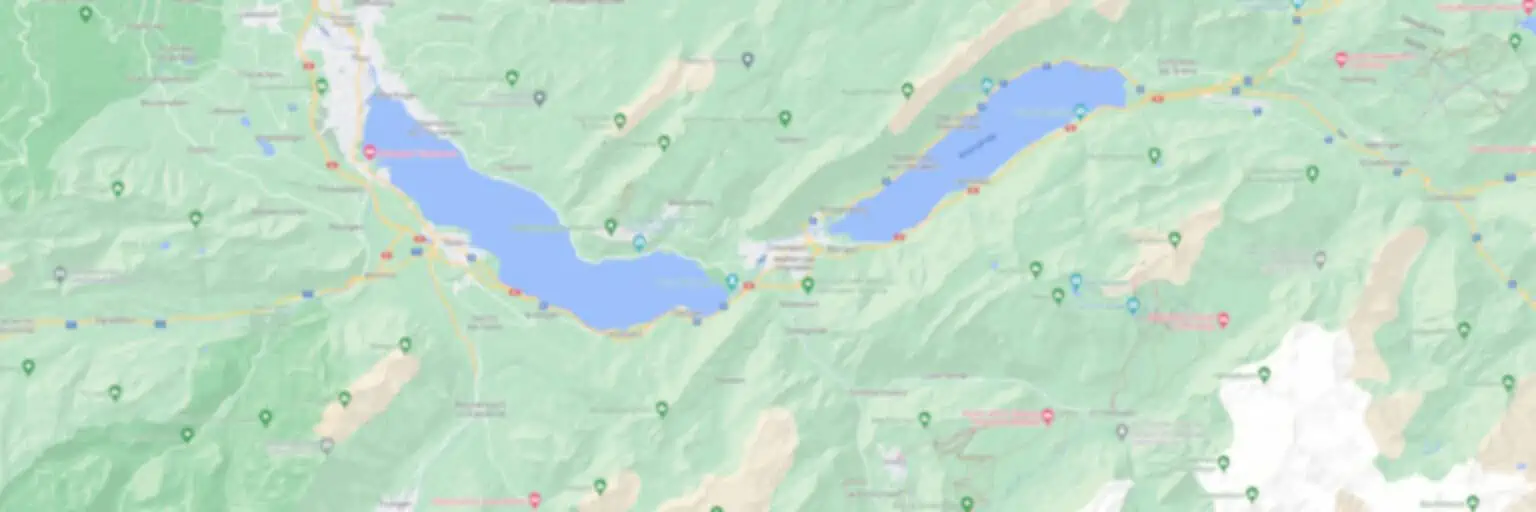
The best time for the Lake Lucerne region 
We think Lake Lucerne can be visited all year. Even though the natural surroundings may not look prettiest in the low-season months of March and November, the variety of the region and the many facilities of Lucerne make up for that.
For example:
- The city of Lucerne and its old town center are attractive in each season.
- Quite some excursions are possible (nearly) year-round: you can make boat trips, train trips, visit Rigi or Pilatus, enjoy the Swiss Museum of Transport and other museums, et cetera.
Spring, summer and fall on Lake Lucerne
- April is usually when spring sets in. Nature is fresh and green, and the lake boulevards are adorned with flowers. It's still low season. Many activities are possible, but not all. The cogwheel train to Pilatus doesn't operate yet, for example.
- Excursion options increase by mid- and end May, when the cogwheel train to Pilatus starts running and the boats at Lake Lucerne switch to their summer schedule.
- The number of tourists usually increases in June, July and August.
- It decreases in September, which is still a good month to explore the region. All mountain transport is still operational, and weather can be very pleasant.
- The transition from summer to fall takes place in October. The vegetation turns into beautiful autumn colors. By mid-October, the boats switch to a more limited schedule. New snow can fall on the peaks surrounding the lake.
Lake Lucerne in winter
The Christmas season
We think Lucerne is an excellent destination from mid-November to December. There are several Christmas markets in town, and you can quickly reach other atmospheric cities by train.
Don't expect a white Christmas in Lucerne or other lakeside villages. Snowfall can occur at this altitude, but it's not likely.
Winter sports and snow
Lake Lucerne is not the most suitable destination for winter sports. Lucerne, the lakeside towns and even several mountain tops are too low to guarantee snowfall. The city itself is worth a visit though, and you can make trips to ski areas at higher elevations (such as the Titlis) if you don't mind some traveling time.
What's the weather like at Lake Lucerne? 
Temperatures in the Lake Lucerne area
The climate of Lake Lucerne is, in general, mild and moist. Most towns and villages on the lake are at low altitude to Swiss standards: about 400 to 500 m.
This means that temperatures can go up to 25°C (or significantly more during heat waves) around the lake in summer. In winter, it often doesn't get much colder than 5°C.
Rain and snowfall near Lake Lucerne
The moist climate of Lake Lucerne causes quite some rainfall. The wettest months are those in summer, especially May to September.
But don't worry about this too much: if it rains, it's often showers mixed with dry and sunny spells. We've had days and even weeks of clear skies and sunshine just as well.
Winter temperatures are generally too high to result in snow in the lakeside towns. You will see snow on the hills and mountains surrounding Lake Lucerne though, so the scenery can still be stunning in winter!
5-day forecast for Vitznau
Vitznau is just one of the many villages on Lake Lucerne. Consult short-term, local forecasts for your specific base town or excursion destination.
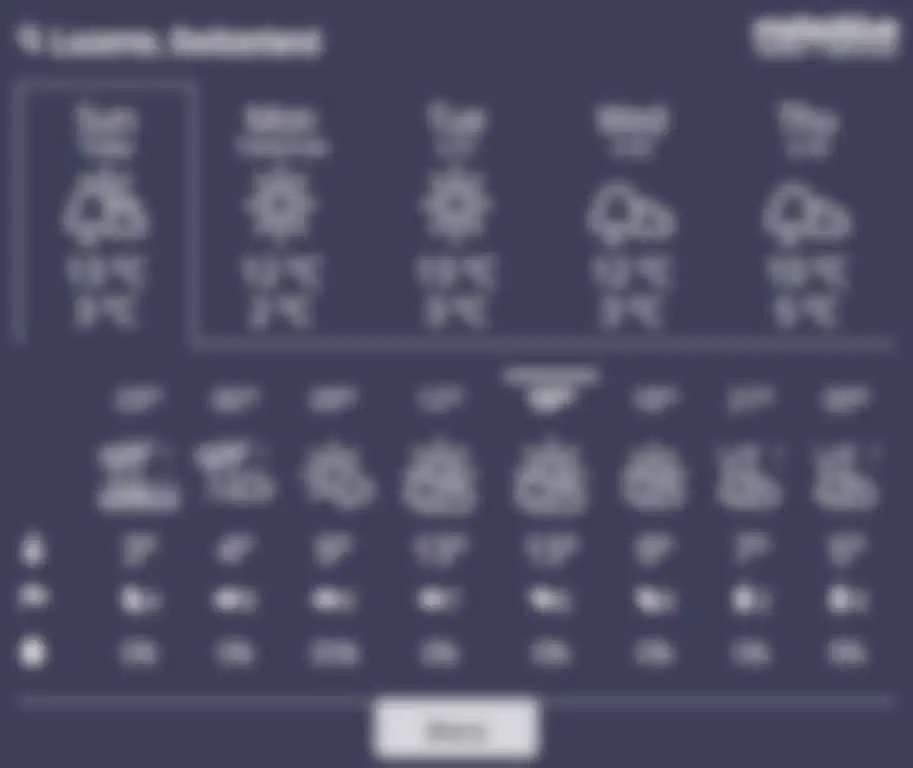
Accommodation in the Lake Lucerne region 
Hotels
Hotels are widely available in the city of Lucerne. Many lakeside towns have several hotels as well. A hotel is a good choice if you plan relatively short stays.
Holiday homes, apartments and campsites
The choice of rentals in Lucerne itself is somewhat limited: hotels are more common here. Many of the smaller lakeside towns do offer rentals, but not as many as in some other Swiss holiday regions like the Bernese Oberland and the Valais.
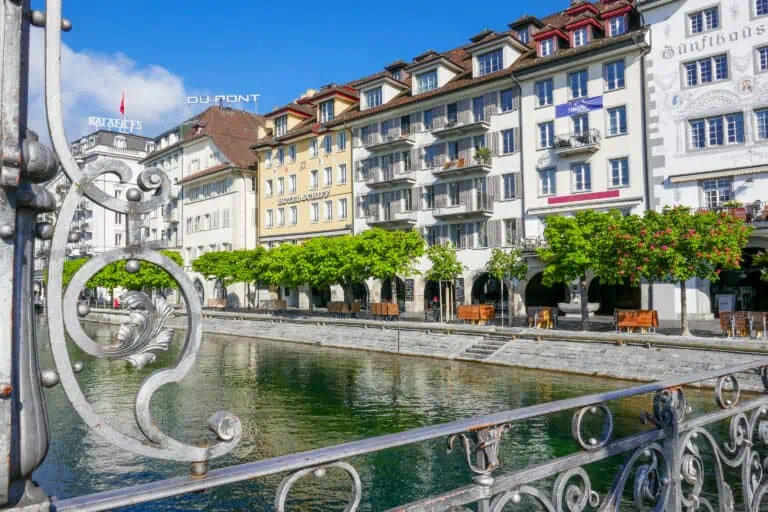
Hotels in Lucerne, Switzerland
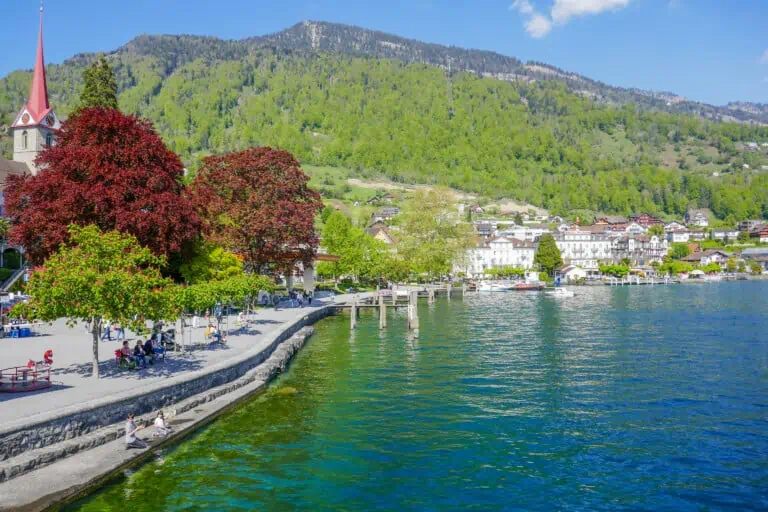
Vacation homes and apartments in the Lake Lucerne area
Is Lake Lucerne worth visiting?
Yes. The vibrant medieval town of Lucerne, combined with the beautiful lake scenery, is absolutely worth your time. We think Lake Lucerne is special for these 3 reasons:
- There are activities for anyone: Lucerne is a beautiful old town with museums, monuments and lots of shopping facilities. Zurich is less than an hour away if you want to do more city trips. In addition, there are boat trips and many mountain tops.
- The region is ideal for travelers who arrive or depart from Zurich. The international airport of Zurich is less than an hour by train from Lucerne. So it’s easy to spend a couple of days in this area, either before you continue your journey further south into Switzerland or on your way back.
- Nature and scenery are beautiful. Even though this area doesn’t have the tallest peaks of Switzerland, the rolling green hills and the tops of the Pre-Alps are wonderful. On clear days, you’ll have panoramic views all the way toward the high Bernese Alps from vantage points like Stanserhorn and Pilatus.
Where to stay on Lake Lucerne: all sub-regions and towns
Lucerne: central location and lots of facilities
We recommend staying in Lucerne if you:
- like a mid-size city with lots of restaurants, museums, shops, and a pretty ancient town center.
- prefer a central location.
- want to make day trips to other cities like Zurich, Bern, and St. Gallen.
- want to visit the Pilatus.
Stansstad and Stans: smaller alternatives to Lucerne
At a 15- to 20-minute train ride south of Lucerne are the smaller towns of Stansstad and Stans. Stansstad is directly on the lake has some larger stores. Stans is a bit higher on the hills, offering a pretty old village center.
If your accommodation is in Stans and views are unobstructed, you’ll see the western part of Lake Lucerne, the city of Lucerne, Mount Pilatus and the Alpnachersee. This is where Alpnachstad and the funicular station to Pilatus can be found.
If you’re based in Stansstad or Stans, the ride up to Stanserhorn is an easy one: the funicular starts from Stans.
Küssnacht, Weggis, Vitznau and Gersau: lakeside towns on the northern shore
The hills of the Rigi mark the northern border of the lake. At its foot, and directly on the lake, you’ll find several smaller towns. Each of those provides good access to the Rigi. And in many cases, you’ll have wide lake views from your accommodation. Details:
- Küssnacht is best if you want to stay in a village with a train station. It’s a good base if you want to reach Lucerne quickly, but are also interested in the area north of the lake. You may want to visit the smaller but beautiful Lake Zug or the city of Zurich for example.
- Consider Weggis, Vitznau, or Gersau if you don’t mind traveling by bus. Weggis and Vitznau provide direct access to Rigi: Weggis by cable car to Rigi Kaltbad, and Vitznau by cogwheel train to Rigi Kulm. From all three villages, you can directly board the boats crossing the lake.
We can recommend Weggis from our personal experience:
- Even though we usually prefer staying close to a rail station, the frequent buses to Küssnacht make sure we can easily travel in several directions. So it still feels like a pretty central location.
- In addition, we love the views of the lake, Bürgenstock and Pilatus directly from town.
- The quay is lovely too, adorned with flowers in spring and summer.
Ennetbürgen, Buochs, Beckenried and Emmetten: lakeside towns on the southern shore
South-east of Lucerne are a couple of other villages. From west to east these are Ennetbürgen and Buochs (very close to one another), Beckenried and Emmetten. They’re on the southern shore of the lake and look toward the hills of the Rigi in the north.
These villages can only be reached by bus from Stans. A train and bus ride from Lucerne takes at least 25-30 minutes to Ennetbürgen and Buochs, 35 minutes to Beckenried, and 45 minutes to Emmetten.
Details per town:
- There are a few hotels in Buochs. Note that there’s an airstrip for small planes directly west of Ennetbürgen and Buochs. If you don’t want to get disturbed by the sound, you may not favor these villages.
- We feel that Beckenried is a better option for a stay in this area. The village is small, but there are several hotels, a few restaurants and supermarkets, and there’s the local cable car to the mountain Klewenalp.
- Emmetten isn’t directly on the lake, but just a bit higher on the hill with nice lake views. This village too is small. The basic facilities are available. Hotel options are limited, but you’ll find several rental apartments and chalets here.
Seelisberg: absolute peace and quiet
The small settlement of Seelisberg is perched on the hills that rise up west of the lake, where it bends south towards Flüelen. To us, this town has one of the best views of the entire lake region. Choose Seelisberg:
- if you don’t mind longer traveling times for your day trips: you’ll first have to descend by funicular or bus.
- if you’re looking for peace and quiet, and wide scenic views.
Brunnen and Morschach: plenty of facilities and access to Schwyz
Brunnen is on the eastern shore of the lake, where it bends south to Flüelen. It’s more or less opposite of Seelisberg. Brunnen is at lake level, so you can hop right on and off boats here. Brunnen can be reached by train too.
This village has plenty of facilities and also features the interesting Victorinox Swiss Knife museum. You’ll have access to Lake Lucerne, but also to the beautiful hills of Schwyz and the smaller Lauerzsee (“Lake Lauerz”). If you plan one or more day trips to the Ticino south of the Alps, Brunnen is a good choice too.
Morschach is smaller, located south of Brunnen and on a sunny terrace above the lake. It’s at the foot of the Fronalpstock mountain, and there’s a cable car to the village of Stoos. Morschach is popular with families, thanks to its large accommodation complex: the Swiss Holiday Park.
Engelberg: a perfect base for hiking and skiing
Engelberg is quite far south of the lake, at a 45-minute train ride from Lucerne. So it’s debatable whether it’s part of the Lake Lucerne area. But many visitors to Lucerne include a trip to Engelberg and Mount Titlis in their itinerary.
Engelberg can be a wonderful base town too. Here are the pros:
- The Titlis isn’t the only mountain to visit here. The Brunni area can be reached by cable car as well.
- The valley offers lots of hiking and mountain bike trails.
- In winter, the mountains serve as one of Switzerland’s largest ski and snow areas.
- The village is very well geared to tourists. You’ll find plenty of hotels, holiday rentals, restaurants and shops here.
A disadvantage is that the valley is somewhat secluded. You’ll have to take a train to Stansstad or Lucerne to reach the lake. This is a very pretty ride though, so if you don’t mind additional traveling time, the beauty of the Engelberg Valley can be worth it.
Location, scenery, and geography of the lake area
Where is Lake Lucerne located?
Lake Lucerne is located in a large area called Central Switzerland. It’s roughly in the middle of the country. The region is north of the Swiss Alps.
Central Switzerland spans several Swiss cantons: Luzern, Obwalden, Nidwalden, Uri, Schwyz, and Glarus.
How large is Lake Lucerne?
Lake Lucerne is one of Switzerland’s larger lakes. It stretches out from Lucerne in the north-west all the way to Flüelen in the south-east. To give you an idea of travel times between both towns:
- 2h45 by boat
- 1h00 by train via Arth-Goldau and Brunnen (north-eastern side of the lake)
- 0h35 by car via Beckenried (south-western side of the lake)
What are the geography and scenery like?
Lake Lucerne has a remarkable shape, with smaller bays in all directions. Roughly, it can be divided into two main areas:
- The north-western part between Lucerne and Brunnen. West of the shore are the city of Lucerne and the mountain Pilatus. Villages such as Weggis, Vitznau, and Gersau are situated at the forested base of the Rigi north of the lake. The Rigi is a mountain range with many hiking trails and great views from the top. At the southern side, across the lake, are Bürgenstock and the Stanserhorn. Significantly further south are the village of Engelberg and the mountain Titlis.
- The south-eastern part between Brunnen and Flüelen. The mountains are higher and more rugged here. Apart from Brunnen and Flüelen, there are only some small settlements on this part of the lake. Examples are Bauen and scenic Seelisberg on the western shore. Flüelen is at the very southern end of the lake. This is where the train route into the Gotthard mountains and to the Ticino begins.
Is Lake Lucerne in the Alps?
Lake Lucerne isn’t entirely in the Swiss Alps. The name “Swiss Alps” is mostly used for the mountain range further south, that stretches from western to eastern Switzerland. The lower mountains surrounding Lake Lucerne are called the “Pre-Alps” (“Voralpen” in German).
This doesn’t mean the scenery is less pretty. The lake, green hills, and mountains make for a varied and wonderful landscape. From several peaks in this area, you’ll have panoramic views all the way south to the Bernese Alps.
The mountains south of the lake, which include the Gotthard Pass, are part of the Alps.
FAQ about Lake Lucerne
-
How long should I stay in the Lake Lucerne area?
We advise staying at least 3 to 4 days in this region. You’ll be able to do various activities: you can explore the old town of Lucerne, make boat trips and visit several mountain tops.
For a thorough exploration of this large and varied region, you need at least 1 week. 2 weeks would be even better.
-
Is one day enough to see Lake Lucerne?
-
How long does it take to reach the Swiss Alps from Lucerne?
A train trip to Interlaken, which is just north of the Bernese Alps, takes 1h50 from Lucerne. A ride to Erstfeld south of Flüelen, where the Gotthard Massif begins, takes 0h55 from Lucerne.
Find all journey times in the Swiss timetable.
-
Where is the best view of Lake Lucerne?
At lake level, the views toward the south from the quays of the villages Weggis, Vitznau and Brunnen are beautiful.
For panoramic views, you can best travel up. You’ll see large parts of the lake and the mountains south of it from the Rigi. The viewing platform Känzeli near Rigi Kaltbad is especially worth it. Wide views toward the north and east can be found at Pilatus, Bürgenstock, and Stanserhorn.
Our personal tip is Seelisberg. This tiny village is located on the hills, just where the large lake bends from the north-west to the south-east. You’ll see both parts of the lake, as well as Brunnen on the opposite side of the lake and the peaks of Schwyz east of this town.
-
What does “Vierwaldstättersee” mean?
“Vierwaldstättersee” is the local German name for Lake Lucerne. It literally translates into “lake of the four forest settlements” or “four forest cantons”. These four cantons are Lucerne, Schwyz, Unterwalden, and Uri. Unterwalden in turn is the older name for the cantons of Obwalden and Nidwalden, which are now separated.
-
Can I swim in Lake Lucerne?
Yes, there are several locations at which you can swim near the shores on warm summer days. Examples are Vitznau and Weggis, and Lucerne Lido (across from the Swiss Museum of Transport).
-
What’s the water temperature of Lake Lucerne?
Count on average water temperatures of 17°C to 22°C in summer, and 5°C to 8°C in winter.
-
Does Lake Lucerne freeze in winter?
No. Lake Lucerne has a very large surface, that’s in motion continuously due to the river Reuss flowing into the lake at Flüelen, wind, and boats crossing the lake year-long. So even if temperatures drop to below 0°C, the lake won’t freeze.
Other websites of interest
- www.tourismusstans.ch: Stans Tourism
- www.weggis-vitznau.ch: Weggis and Vitznau Tourism
- www.regionklewenalp.ch: Ennetbürgen, Buochs, Beckenried, Emmetten and Klewenalp Tourism
- www.seelisberg.com: Seelisberg Tourism
- www.schwyz-tourismus.ch: Brunnen and Schwyz Tourism
- www.stoos-muotathal.ch: Morschach, Stoos and Muotathal Tourism
- www.myswitzerland.com: Engelberg Tourism
- www.luzern.com: swimming near and in Lake Lucerne
- www.wassertemperatur.com: water temperatures of Lake Lucerne
Our info about the city of Lucerne 
Suggestions for itineraries that include Lake Lucerne 
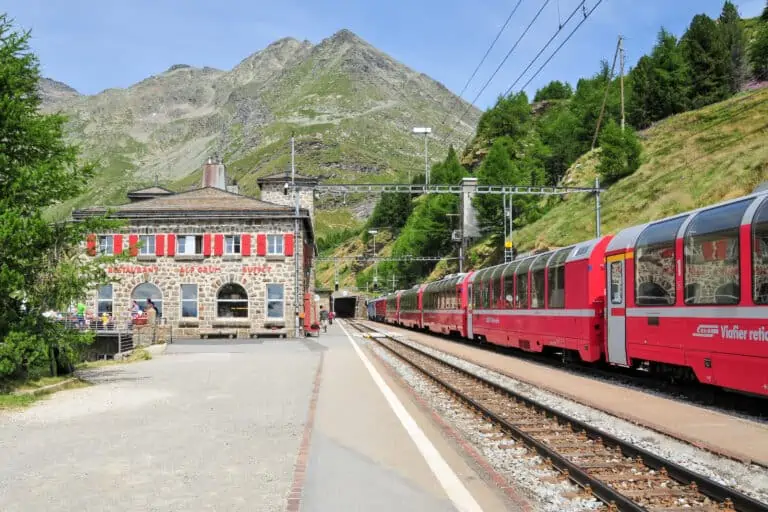
Ultimate scenic trains
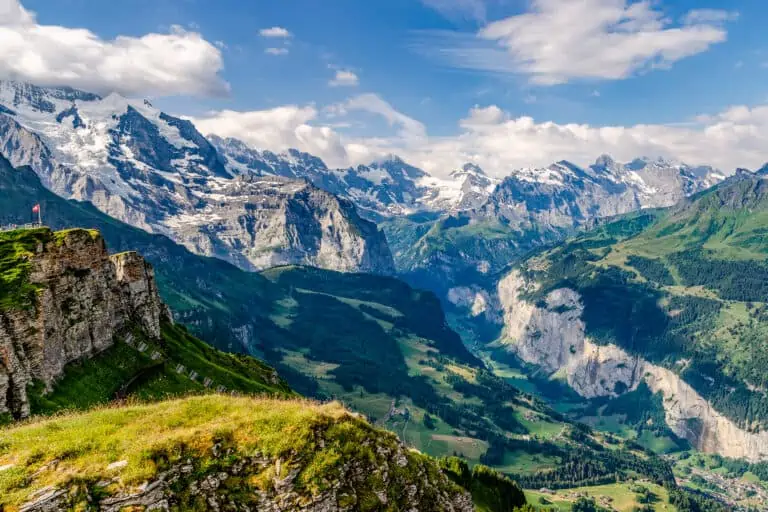
Best of the Alps
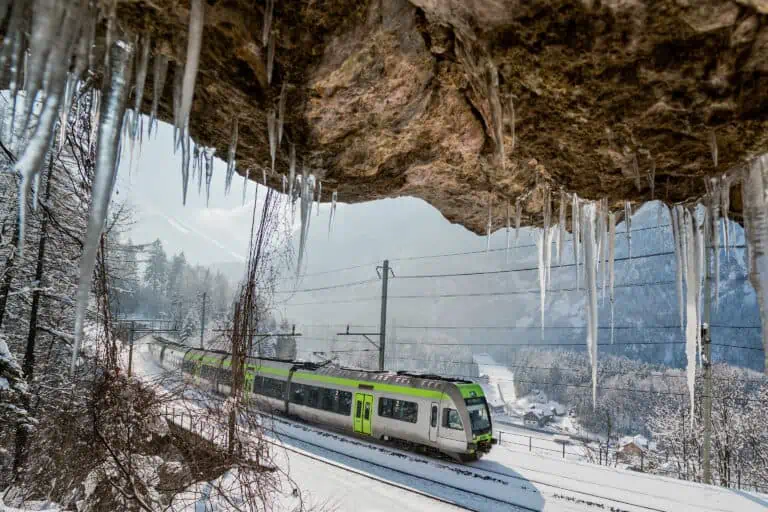
Scenic trains winter
More about Lake Lucerne in our blog 
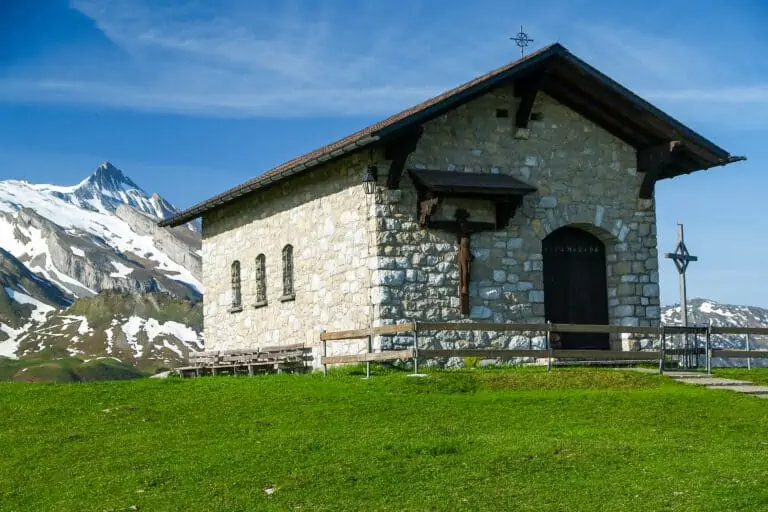
Hike Klewenalp-Stockhütte
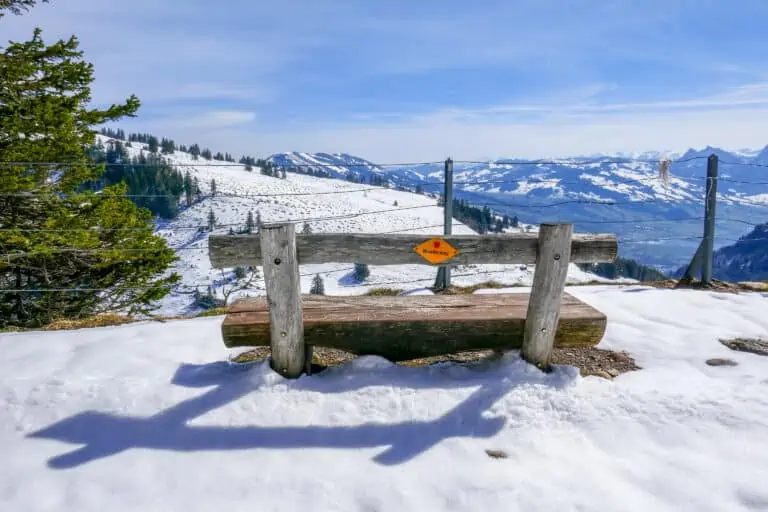
Hike Rigi Kaltbad-Rigi Scheidegg
